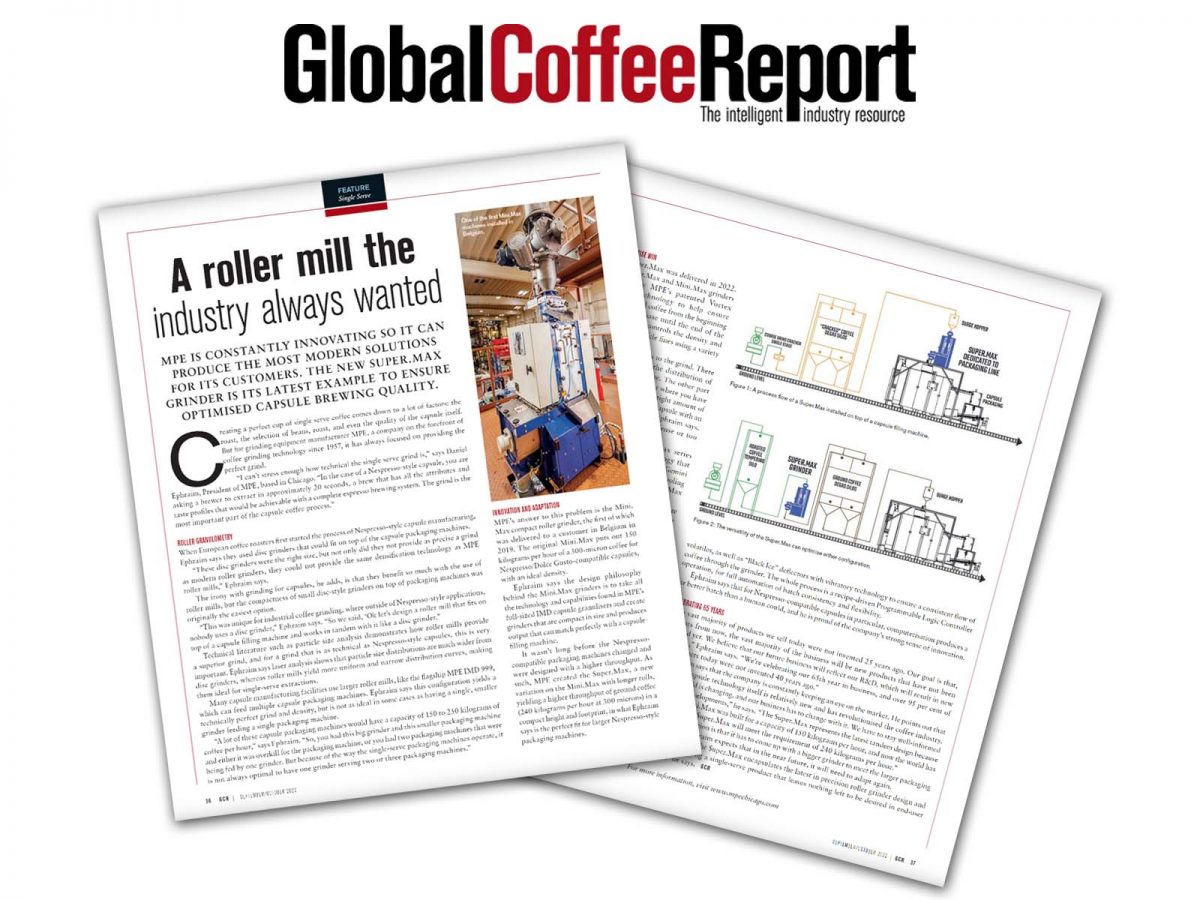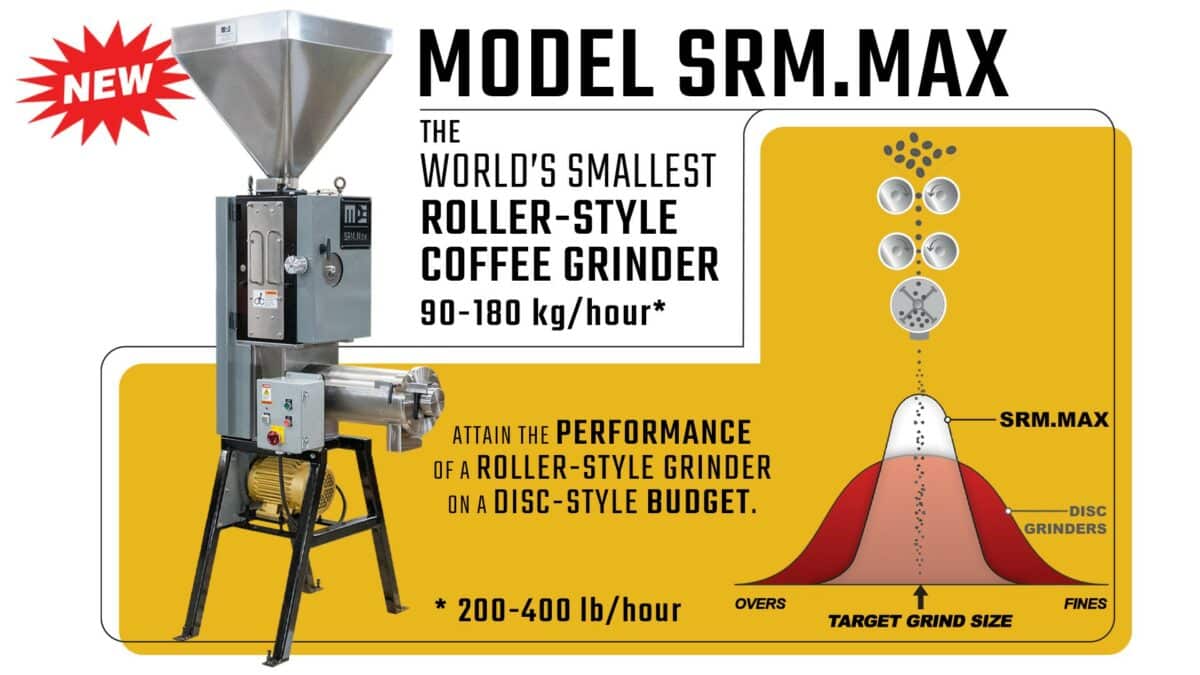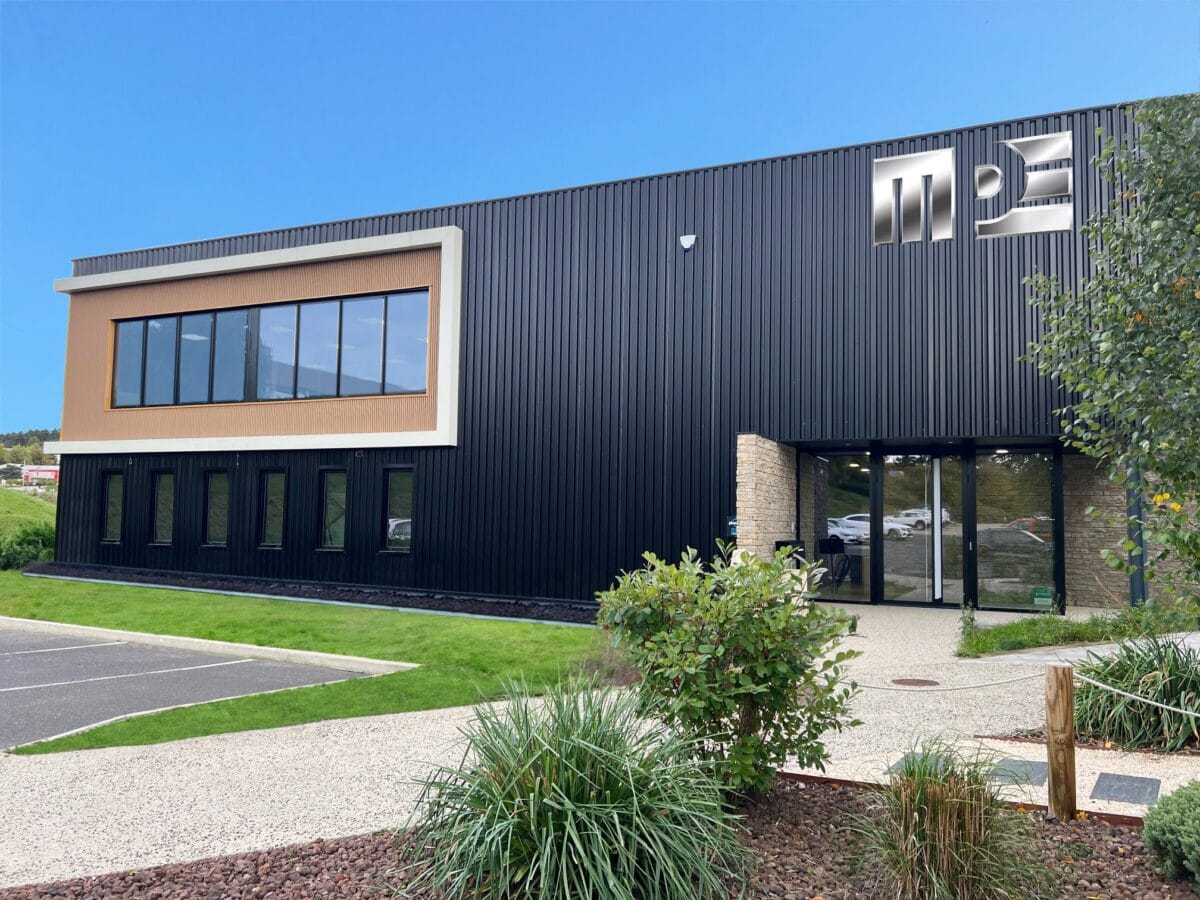MPE is constantly innovating so it can produce the most modern solutions for its customers. The new Super.Max grinder is its latest example to ensure optimised capsule brewing quality.
Creating a perfect cup of single serve coffee comes down to a lot of factors: the selection of beans, roast, and even the quality of the capsule itself. But for grinding equipment manufacturer MPE, a company on the forefront of coffee grinding technology since 1957, it focused on providing the perfect grind.
“I can’t stress enough how technical the single serve grind is,” says Daniel Ephraim, President of MPE, based in Chicago. “In the case of a Nespresso-style capsule, you are asking a brewer to extract in approximately 20 seconds, a brew that has all the attributes and taste profiles that would be achievable with a complete espresso brewing system. The grind is the most important part of the capsule coffee process.”

Roller Granulometry
When European coffee roasters first started the process of Nespresso-style capsule manufacturing, Ephraim says they used disc grinders that could fit on top of the capsule packaging machines.
“These disc grinders were the right size, but not only did they not provide as precise a grind as modern roller grinders, they could not provide the same densification technology as MPE roller mills,” Ephraim says.
The irony with grinding for capsules, he adds, is that they benefit so much with the use of roller mills, but the compactness of small disc-style grinders on top of packaging machines was originally the easiest option.
“This was unique for industrial coffee grinding, where outside of Nespresso-style applications, nobody uses a disc grinder,” Ephraim says. “So we said, ‘Ok let’s design a roller mill that fits on top of a capsule filling machine and works in tandem with it like a disc grinder.”
Technical literature such as particle size analysis demonstrates how roller mills provide a superior grind, and for a grind that is as technical as Nespresso-style capsules, this is very important. Ephraim says laser analysis shows that particle size distributions are much wider from disc grinders, whereas roller mills yield more uniform and narrow distribution curves, making them ideal for single-serve extractions.
Many capsule manufacturing facilities use larger roller mills, like the flagship MPE IMD 999, which can feed multiple capsule packaging machines. Ephraim says this configuration yields a technically perfect grind and density, but is not as ideal in some cases as having a single, smaller grinder feeding a single packaging machine.
“A lot of these capsule packaging machines would have a capacity of 150 to 250 kilograms of coffee per hour,” says Ephraim. “So, you had this big grinder and this smaller packaging machine and either it was overkill for the packaging machine, or you had two packaging machines that were being fed by one grinder. But because of the way the single-serve packaging machines operate, it is not always optimal to have one grinder serving two or three packaging machines.”
Innovation and adaptation
MPE’s answer to this problem is the Mini.Max compact roller grinder, the first of which was delivered to a customer in Belgium in 2019. The original Mini.Max puts out 150 kilograms per hour of a 300-micron coffee for Nespresso/Dolce Gusto-compatible capsules, with an ideal density.
Ephraim says the design philosophy behind the Mini.Max grinders is to take all the technology and capabilities found in MPE’s full-sized IMD capsule granulisers and create grinders that are compact in size and produces output that can match perfectly with a capsule-filling machine.
It wasn’t long before the Nespresso-compatible packaging machines changed and were designed with a higher throughput. As such, MPE created the Super.Max, a new variation on the Mini.Max with longer rolls, yielding a higher throughput of ground coffee (240 kilograms per hour at 300 microns) in a compact height and footprint, in what Ephraim says is the perfect fit for larger Nespresso-style packaging machines.
A no-compromise win


The first Super.Max was delivered in 2022. Both the Super.Max and Mini.Max grinders are backed by MPE’s patented Vortex normalising technology to help ensure perfectly densified coffee from the beginning of the grinding phrase until the end of the batch. This system controls the density and the free-floating particle fines using a variety of sensors in real time.
“There are two parts to the grind. There is the granulometry, or the distribution of particles, that’s number one. The other part is in our densifier/normaliser where you have control, so you have just the right amount of density so fit 5.5 grams into a capsule with an optimal percentage of fines,” Ephraim says. “You don’t want it to be too dense or too fluffy.”
The Super.Max and Mini.Max series grinders contain the same technology that has been available with MPE’s flagship Gemini Series grinders. MPE’s leading water-cooling technology is also built into the Mini and Super.Max grinders.
“Any time you are grinding coffee, you are using energy and the final form of all energy is heat,” says Ephraim. “The volatiles and aromatics in coffee will evaporate at very low temperatures, some of them as low as 105 to 110 degrees Fahrenheit (about 41 to 43°C) so it is good manufacturing practice in coffee to preserve those elements.
“You want to create a low temperature environment within the grinder, keeping the coffee 75 degrees [Fahrenheit] to prevent the loss of the coffee volatiles and aromatics. The cooler the coffee, the better off you are.”
The Super.Max has refrigerated rolls for maximum preservation of coffee aroma and volatiles, as well as Black Ice deflectors with vibratory technology to ensure a consistent flow of coffee through the grinder. The whole process is a recipe-driven Programmable Logic Controller operation, for full automation of batch consistency and flexibility.
Ephraim says that for Nespresso-compatible capsules in particular, computerisation produces a far better batch than a human could, and he is proud of the company’s strong sense of innovation.
Celebrating 65 years
“The vast majority of products we sell today where not invented 25 years ago. Our goal is that, 20 years from now, the vast majority of the business will be new products that have not been invented yet. We believe that our future business will reflect our R&D, which will result in new products,” Ephraim says. “We’re celebrating our 65th year in business, and over 95 per cent of our products today were not invented 40 years ago.”
Ephraim says that the company is constantly keeping an eye on the market. He points out that Nespresso capsule technology itself is relatively new and has revolutionised the coffee industry.
“The world is changing, and our business has to change with it. We have stay well-informed of the latest developments,” he says. “The Super.Max represents the latest tandem design because the original Mini.Max was built for a capacity of 150 kilograms per hour, and now the world has changed and the Super.Max will meet the requirement of 240 kilograms per hour.”
MPE’s observation is that it has to come up with a bigger grinder to meet the larger packaging capacities, and Ephraim expects that in the near future, it will need to adapt again.
“But right now, the Super.Max encapsulates the latest in precision roller grinder design and densification, yielding a single-serve product that leaves nothing left to be desired in end-user experience,” he says.
For more information, visit mpechicago.com
This article appears in the September/October 2022 issue of Global Coffee Report, published by Prime Creative Media based in Australia. Therefore this article’s style and spelling conform to Standard Australian English.




